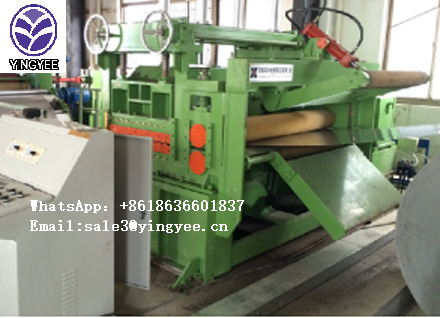
Understanding Cut-to-Length Machines A Comprehensive Overview
In the realm of manufacturing and industrial processing, efficiency and precision are paramount. One essential piece of equipment that aids in achieving these goals is the cut-to-length (CTL) machine. This specialized machinery significantly enhances productivity by automating the cutting process, ensuring that materials are processed to the desired size with minimal waste.
What is a Cut-to-Length Machine?
A cut-to-length machine is designed to cut continuous material, such as metal sheets, coils, or paper rolls, into predetermined lengths. It operates by feeding the material through a series of rollers that guide it to the cutting mechanism. The machine typically includes features like measuring systems, cutting blades, and sometimes even edge trimming capabilities to ensure that the end product meets specific dimensions.
Applications of Cut-to-Length Machines
Cut-to-length machines are prevalent in various industries. In the steel and metalworking sectors, they are used to process large coils of metal into manageable sheets or strips, which can then be used in fabrication and manufacturing processes. In the paper industry, CTL machines help create standard-sized sheets from large rolls of paper, making it easier for printers and manufacturers to handle and utilize the paper for their products.
Other applications include the production of textiles, plastics, and even wood materials. In these contexts, CTL machines optimize the cutting process, reduce human error, and minimize material waste, thereby increasing overall efficiency.
Advantages of Using Cut-to-Length Machines
1. Increased Efficiency One of the most significant benefits of CTL machines is their ability to process materials quickly. Automated cutting reduces the time required to produce finished products, allowing businesses to meet demands and deadlines more effectively.

2. Precision Cutting CTL machines are engineered for accuracy. They can be programmed to cut materials to the exact desired length, which is crucial in industries where precision is key. This reduces the likelihood of errors and the need for rework.
3. Reduced Labor Costs With automation, companies can decrease their reliance on manual labor, which not only cuts labor costs but also minimizes human error. Operators are needed primarily for setup and oversight, allowing them to focus on more complex tasks.
4. Lower Material Waste By cutting materials to size as needed, CTL machines can significantly reduce waste. This not only saves money but also supports environmental sustainability, a growing concern in today’s industry.
5. Versatility Many CTL machines can accommodate a variety of materials and thicknesses, making them versatile in application. This adaptability ensures that manufacturers can utilize a single machine for multiple products, streamlining the production process.
Technological Advancements
The evolution of technology has also impacted cut-to-length machines. Modern machines are often equipped with advanced control systems, allowing for easier programming and adjustment. Features such as real-time monitoring, automated adjustments, and integration with other production machinery enhance their functionality, providing operators with valuable data that can be used to improve production processes.
Conclusion
As industries continue to seek ways to optimize production and reduce costs, cut-to-length machines stand out as vital tools in the manufacturing landscape. Their ability to deliver efficiency, precision, and versatility makes them indispensable in various sectors, from metalworking to textiles. As technology advances, the capabilities of CTL machines are likely to expand further, ensuring that they remain at the forefront of modern manufacturing practices. Businesses that invest in these machines not only enhance their production capabilities but also position themselves for sustainable success in an increasingly competitive market.
In an era where time and resources are critical, cut-to-length machines embody the fusion of technology and industry needs, paving the way for a more efficient future.